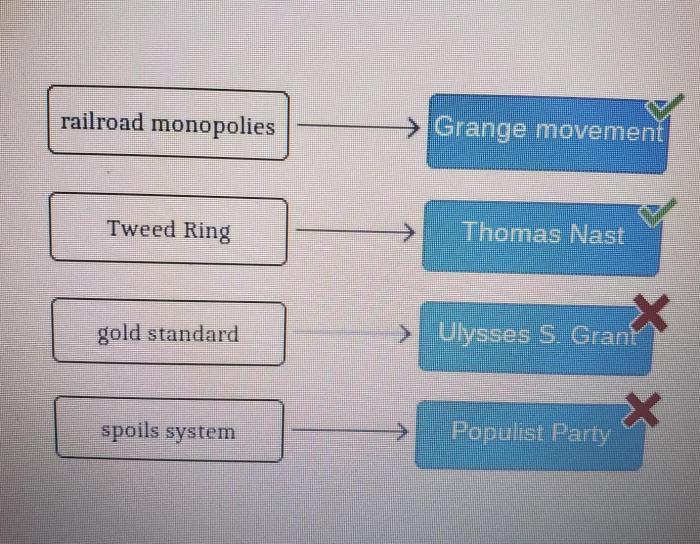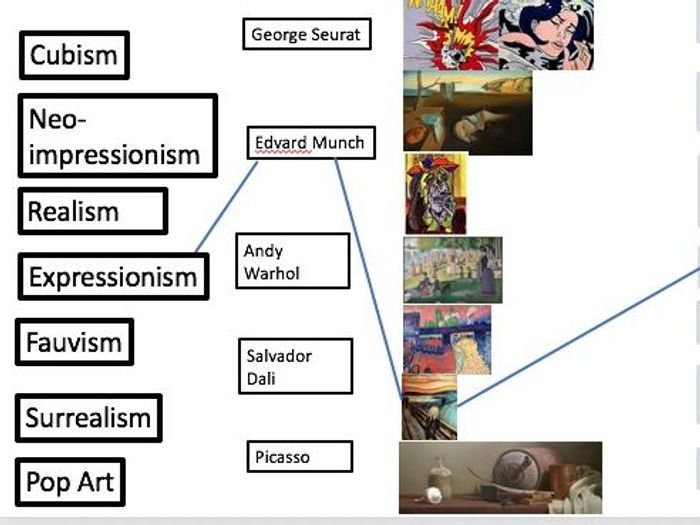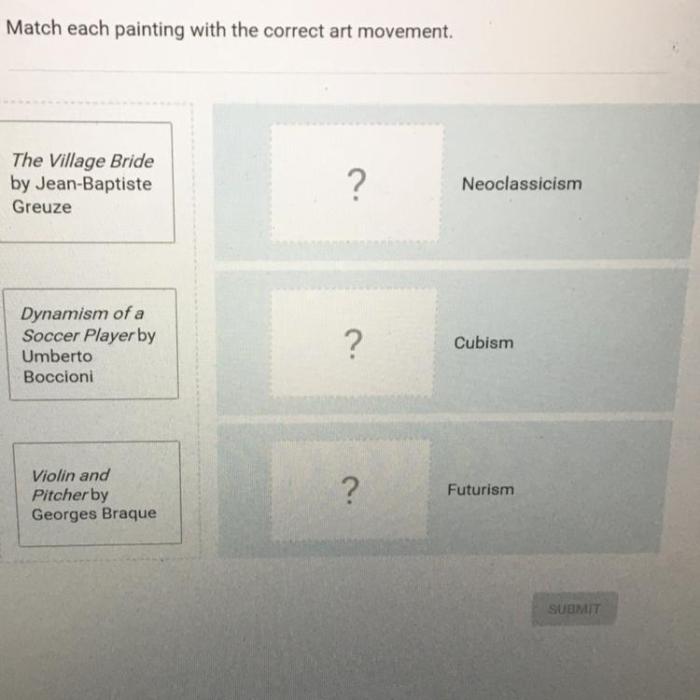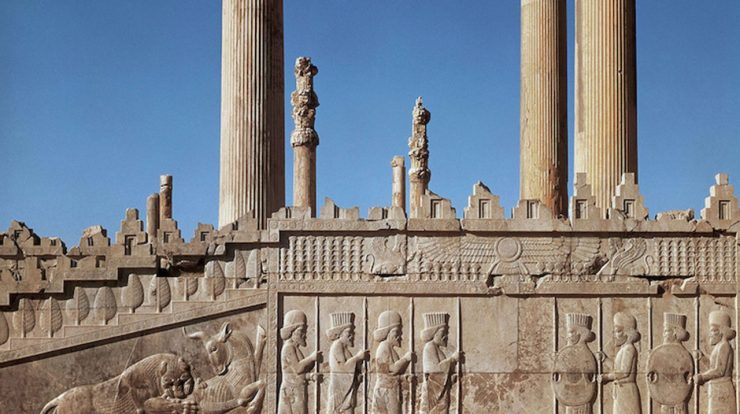Match each painting with the correct art movement and embark on an artistic odyssey that unveils the captivating relationship between paintings and the movements that shaped them. From the ethereal brushstrokes of Impressionism to the bold colors of Expressionism, this exploration delves into the defining characteristics of each movement, illuminating the profound impact they have had on the art world.
Throughout history, art movements have emerged as collective expressions of artistic vision, reflecting the cultural, social, and intellectual currents of their time. Understanding the movement behind a painting unlocks a deeper appreciation for its aesthetic qualities, historical significance, and cultural context.
Introduction

Matching paintings with the correct art movement is a crucial aspect of art history. It allows us to understand the historical and cultural context in which a painting was created and to appreciate its significance within the broader development of art.
Art Movements: Match Each Painting With The Correct Art Movement

Art movements are broad categories that group together paintings that share similar characteristics, such as style, subject matter, and technique. Some of the major art movements include:
- Renaissance(14th-17th century): Realism, humanism, perspective
- Baroque(17th-18th century): Dramatic lighting, emotional intensity, movement
- Neoclassicism(18th-19th century): Inspired by classical Greece and Rome, emphasis on order, balance, and harmony
- Romanticism(19th century): Emphasis on emotion, imagination, and nature
- Impressionism(late 19th century): Loose brushwork, focus on light and color
- Post-Impressionism(late 19th-early 20th century): Experimental techniques, emphasis on structure and form
- Modernism(20th century): Abstraction, experimentation, rejection of traditional forms
- Contemporary Art(late 20th century-present): Wide range of styles and techniques, focus on social and political issues
Matching Paintings

To match a painting with the correct art movement, it is important to analyze its characteristics:
- Style: Brushwork, color palette, composition
- Subject matter: Historical, religious, mythological, landscape, portraiture
- Technique: Oil on canvas, watercolor, fresco
By comparing these characteristics to the key features of different art movements, it is possible to make an accurate match.
Examples and Methods

Here are some examples of paintings and their corresponding art movements:
- Mona Lisaby Leonardo da Vinci (Renaissance)
- The Night Watchby Rembrandt (Baroque)
- The Oath of the Horatiiby Jacques-Louis David (Neoclassicism)
- Wanderer above the Sea of Fogby Caspar David Friedrich (Romanticism)
- Impression, Sunriseby Claude Monet (Impressionism)
- The Starry Nightby Vincent van Gogh (Post-Impressionism)
- Guernicaby Pablo Picasso (Modernism)
- The Dinner Partyby Judy Chicago (Contemporary Art)
Quick FAQs
What are the key characteristics of Impressionism?
Impressionism is characterized by its focus on capturing the fleeting effects of light and atmosphere, with loose brushwork, vibrant colors, and an emphasis on capturing the momentary and subjective experience of the artist.
How can I identify an Expressionist painting?
Expressionist paintings are often characterized by their use of bold colors, distorted forms, and exaggerated brushwork, reflecting the artist’s inner emotions and subjective experiences.
What is the significance of understanding art movements?
Understanding art movements provides a deeper appreciation for the historical, cultural, and intellectual context of a painting, allowing us to better grasp the artist’s intentions and the impact of their work on the art world.
